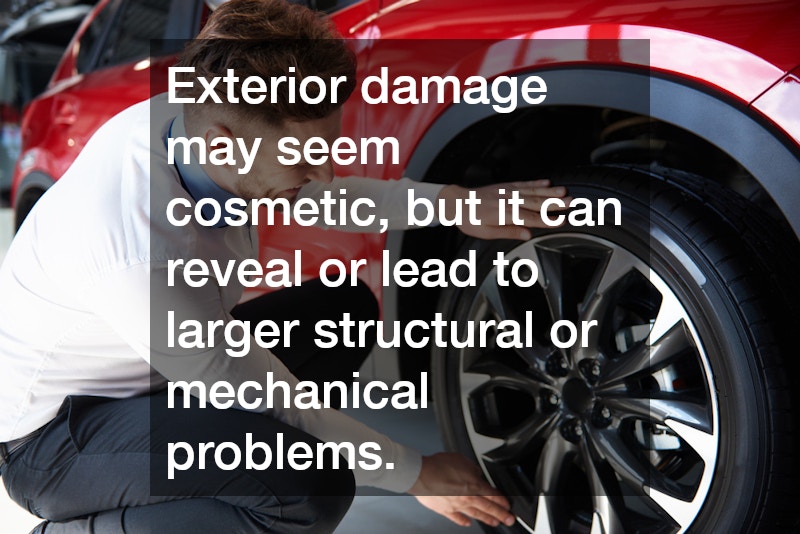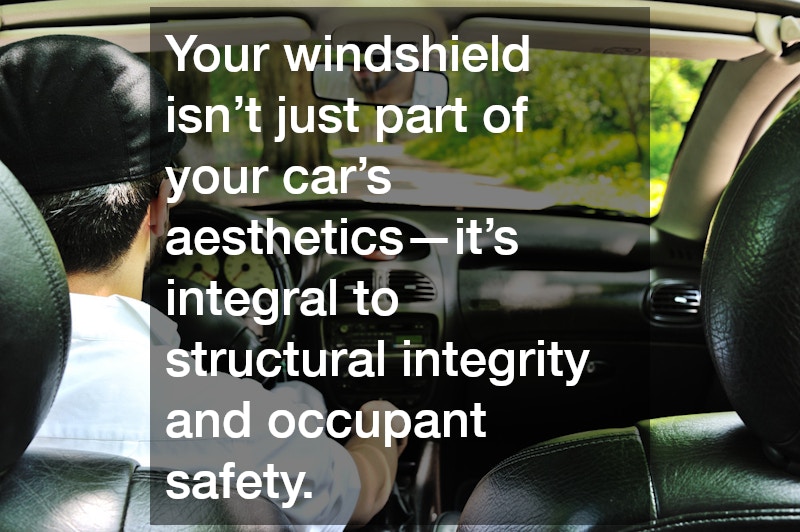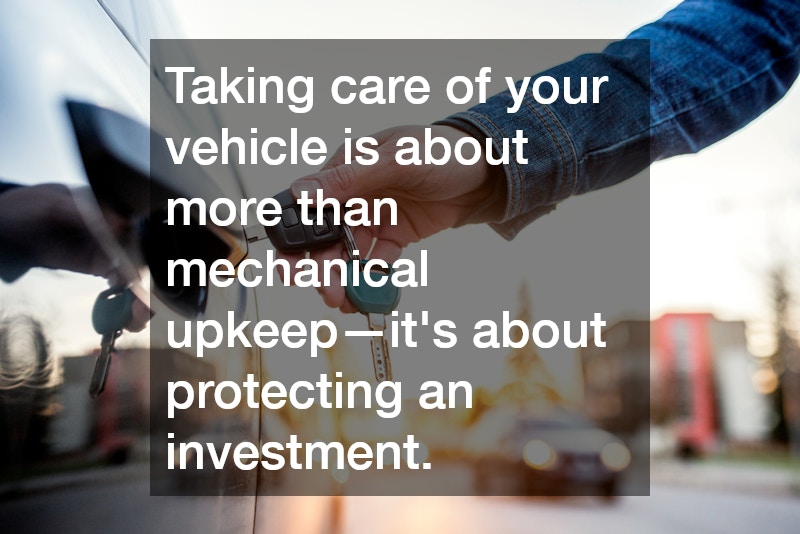Maintaining your vehicle isn’t just about avoiding breakdowns—it’s about keeping it safe, efficient, and valuable for years to come. From routine tune-ups to major repairs after a crash, the difference between proactive care and neglect can be dramatic. Today’s vehicles rely on complex systems that often demand professional attention, so knowing when to take action and where to turn is key. In this guide, you’ll discover in-depth advice, practical tips, and expert insight into everything from scheduled maintenance to recovering after an accident.

1. Building a Preventive Maintenance Routine
Prevention beats repair whenever it comes to your car’s long-term performance. Start by establishing a routine schedule that addresses critical systems like engine, brakes, tires, and fluids. Manufacturer-approved service intervals, such as those provided by Carfax and others, can serve as a solid foundational schedule.
Key tasks include:
-
Oil and filter changes: Every 5,000–10,000 miles depending on the vehicle and lubricant.
-
Tire rotations and pressure checks: Rotate every 6,000–8,000 miles for even wear.
-
Brake fluid and system inspection: Often overlooked but essential for safety.
-
Battery and electrical checks: Vital for modern cars with advanced electronics.
Why use local professional services?
Leaving it to experts at trusted auto repair shops means issues get identified early. They track your car’s service history and can spot wear patterns that DIYers might miss. Keep a detailed log or digital file with dates, mileage, and descriptions of services—this helps with resale value and efficient future repairs.

2. Handling Unexpected Issues Like a Pro
Even with a great maintenance routine, unexpected problems can arise. Whether you hear a strange noise, feel a vibration, or discover fluid under the car, having a go-to local auto repair specialist can make all the difference.
What to look for in a quality auto garage:
-
Verified certifications (ASE, manufacturer training)
-
Transparent pricing and written estimates
-
Clear communication on diagnostics and repair timelines
Questions to ask when you call:
-
What is the root cause of the issue?
-
Are genuine parts used, and is there a labor warranty?
-
Can the repair lead to other problems if delayed?
Prompt attention prevents minor faults from snowballing into expensive repairs. A trusted auto garage will treat you more like a partner than a customer, recommending solutions and educating you rather than simply selling services.
3. Protecting Your Vehicle’s Exterior for Long-Term Value
Exterior damage may seem cosmetic, but it can reveal or lead to larger structural or mechanical problems. Minor dings or chips may seem harmless, but they can develop into rust, paint peeling, and even body-alignment issues. Taking action through professional dent repairs or full-scale collision repair restores not just appearance but vehicle integrity.
Actionable tips:
-
Address chips or scratches promptly to avoid rust from forming.
-
Ensure that collision repair shops align panels correctly and restore factory joints, welds, or rivets.
-
After repair, ask to see before-and-after documentation or photos.
-
Keep repair receipts—this history helps attract better offers if you sell later.
A vehicle repaired to factory standards preserves resale value, maintains safety, and ensures the damage doesn’t resurface down the road.
4. Essential Glass and Visibility Maintenance
Your windshield isn’t just part of your car’s aesthetics—it’s integral to structural integrity and occupant safety. Cracks or chips that impair vision should trigger a timely car windshield replacement. In the worst cases, compromised glass can magnify injuries during a crash.
When to act immediately:
-
Cracks wider than a credit card or that run to the edge of the glass
-
Chips in the driver’s direct line of sight
-
Damage after a collision or road-debris strike
If your car’s damage was caused by someone else’s negligence, involving an auto accident lawyer early ensures evidence is preserved and claims can reflect full repair costs, including specialized glass.
By replacing windshield glass properly and promptly, you keep visibility clear, reduce safety hazards, and protect your legal rights.
5. Safety and Legal Readiness After an Accident
When something goes wrong on the road, knowing what steps to take can make all the difference. Here’s a clear post-accident checklist you should follow:
-
Ensure everyone’s safety and call emergency services if needed.
-
Take photos of damage from multiple angles and collect insurance info from other parties.
-
Report the collision to the police and notify your insurer promptly.
-
Contact a qualified accident attorney if liability is unclear, injuries are involved, or the at-fault driver is uninsured.
-
A seasoned car crash lawyer can negotiate fair settlements and ensure your repair costs, medical bills, and lost-wage compensation are addressed.
Many drivers skip the legal step until it’s too late—having professional representation often means getting full value for both repair and damages.
6. How to Extend Your Vehicle’s Lifespan Through Smart Repairs
Longevity doesn’t begin at 100,000 miles—it begins at mile one. By following consistent car maintenance habits and partnering with a trusted local auto repair specialist, you can extend the lifespan of your vehicle significantly.
Prioritize repairs by:
-
Safety issues (brakes, tires, suspension)
-
Performance threats (engine misfires, electrical faults)
-
Value protection (paint chips, windshield cracks, worn interiors)
For example, replacing worn belts or hoses before they fail prevents roadside breakdowns. A repair specialist familiar with your vehicle’s history can create cost-effective repair schedules and plan for eventual replacements. Routine monitoring keeps you ahead of wear and tear and retains peace of mind for years to come.
7. Balancing DIY Repairs and Professional Help
Some maintenance tasks are DIY-friendly—like changing wiper blades or checking tire pressure. But many jobs require a professional hand, beyond what a typical homeowner can handle.
What you can safely DIY:
-
Checking fluids and tire pressure
-
Replacing wiper blades or air filters (with correct specs)
-
Basic cosmetics like cleaning and waxing
What you should hire professionals for:
-
Major system repairs or replacements
-
Complex diagnostics or electronic components
-
Safety-critical systems such as brakes or suspension
A professional auto garage or coverage at reputable auto repair shops offers tools, warranties, and expertise beyond amateur work—making investments into service more than justified.

8. Rebuilding Confidence After Vehicle Damage
Whether from an accident or a weather-related event, vehicle damage can shake your confidence and sense of safety. Even minor dents or scratches can serve as daily reminders of the incident, making it difficult to fully trust your car again. Engaging high-quality collision repair and dent repairs helps restore not only the physical appearance of your vehicle but also your peace of mind.
When selecting a repair provider, look for:
-
Certified repair centers authorized by manufacturers to ensure repairs meet factory standards.
-
Transparent documentation of all parts used, paint applications, and structural repairs completed.
-
Warranties on workmanship that guarantee long-lasting quality and reliability.
-
Thorough oversight of structural integrity, ensuring the frame, suspension, and safety systems are all properly restored.
Beyond aesthetics, professional restoration ensures critical components—like airbags, sensors, and alignments—are recalibrated for safety. A properly repaired car performs as intended, maintaining smooth handling and optimal protection in future collisions.
Once everything is restored correctly, you benefit from a car that drives like new, retains strong resale value, and allows you to feel secure behind the wheel again. Taking time to choose skilled technicians and reputable shops transforms an unfortunate event into an opportunity to renew confidence and strengthen your vehicle’s performance.
9. Staying Legally and Financially Protected on the Road
Vehicle ownership isn’t just mechanical—it also involves legal and financial readiness. Keep your documents, insurance policy, and repair records stored securely and easily accessible. If you’re in an accident, a car crash lawyer or accident attorney can assist with:
-
Gathering evidence of damage and repair needs
-
Ensuring quotations from auto repair shops reflect fair market rates
-
Managing insurer disputes or underpayment issues
Preparedness means your rights are protected and you’re ready for unexpected events.
10. Planning for Seasonal Maintenance and Emergencies
Seasonal changes can wreak havoc on vehicles—from road salt in winter to rock chips in summer. Planning helps maintain performance, prolongs vehicle life, and reduces unexpected repair costs.
Winter: Cold temperatures and icy roads demand attention. Check tire tread and pressure for optimal traction, inspect the battery for strength in freezing conditions, and monitor fluid levels, including antifreeze and windshield washer fluid. Examine windshield integrity and wipers to ensure safe visibility in snow or ice. Winter-ready vehicles are less likely to experience breakdowns or accidents in hazardous conditions.
Summer: Heat and sun exposure create unique challenges. Inspect your air-conditioning system for proper cooling, evaluate the cooling system and radiator for overheating risks, and check roof seals to prevent leaks during summer storms. Pay attention to tire wear, as hot pavement can accelerate deterioration.
After Accidents or Heavy Weather: Prompt action following incidents is critical. Even minor collisions or hail damage can compromise safety. Consider emergency repairs and consult an auto accident lawyer if damage stems from hazardous roads, another driver, or insurance disputes.
Windshield Care: Replacing a cracked or chipped windshield promptly preserves visibility and safety. Acting early prevents further cracking and can simplify insurance claims. Combined with routine seasonal checks, proactive windshield maintenance ensures your vehicle stays safe, compliant, and ready to handle changing conditions year-round.
Additional Tip: Keep an emergency kit in your vehicle that includes jumper cables, a flashlight, first-aid supplies, and basic tools. Preparedness minimizes stress and protects both the driver and passengers in unforeseen situations.
The Foundation of Vehicle Reliability
Regular care, timely repairs, and preparedness combine to ensure your vehicle remains reliable, safe, and high-value. By balancing smart maintenance routines with expert support and legal readiness when necessary, you’re laying the foundation for a vehicle that performs well and retains worth for years. Choose your service partners wisely, keep records, and stay proactive—your car and your peace of mind will thank you.
Benefits of Consistent Upkeep
Beyond just extending your car’s lifespan, consistent upkeep contributes to your overall safety and driving experience. Every well-maintained component—from the tires to the transmission—works together to create a smoother, more fuel-efficient ride. Drivers who commit to preventive maintenance often experience fewer roadside emergencies and lower long-term costs. A vehicle that receives regular inspections and timely servicing not only avoids major mechanical failures but also provides better performance, improved gas mileage, and greater comfort during daily use.
Building Strong Relationships with Local Professionals
Another essential aspect of long-term vehicle care is developing a strong relationship with trusted local professionals. Building a rapport with a reliable auto repair shop, mechanic, or service provider means you’ll have someone familiar with your vehicle’s history. They can identify patterns, anticipate potential issues, and recommend proactive measures that save you from costly surprises. Having a go-to repair shop also ensures accountability and consistency—qualities that can be difficult to find when constantly switching providers.
The Importance of Accurate Documentation
Maintaining accurate documentation is equally important. Keeping receipts, repair records, and inspection reports in one place gives you a clear picture of your vehicle’s health over time. These records can be invaluable if you decide to sell your car or trade it in, as they provide verifiable proof of responsible ownership and upkeep. Many buyers are willing to pay more for a vehicle with a complete maintenance history, viewing it as a sign of reliability and care.
You should also be prepared for unexpected incidents, such as accidents or major repairs. Knowing whom to call—whether it’s a repair specialist, insurance provider, or legal professional—can make the recovery process faster and less stressful. Being prepared doesn’t mean expecting the worst; it means giving yourself the tools to handle challenges confidently and efficiently.
Ultimately, taking care of your vehicle is about more than mechanical upkeep—it’s about protecting an investment that impacts your daily life. A reliable car saves you time, money, and frustration. It supports your work, family, and travel plans, providing the freedom to move safely and comfortably wherever life takes you. When you invest effort into its care, your car returns that investment through years of dependable performance and peace of mind behind the wheel.



